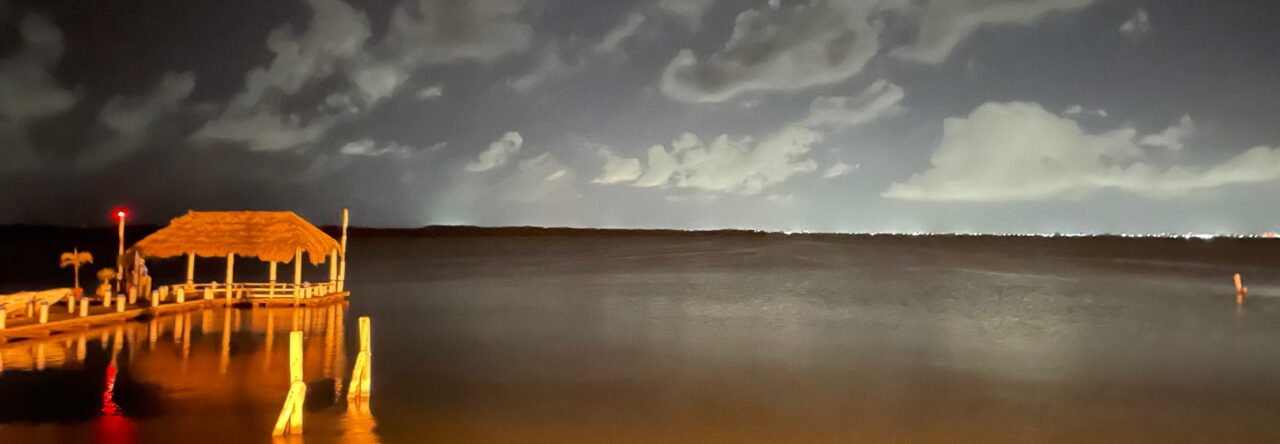“Wind River” opens with a young Indian girl running barefoot across snow with a mountainous landscape in the background. We soon learn that the mountains are (supposedly) in Wyoming on the Wind River Indian Reservation, a reservation established for the Eastern Shoshone and Northern Arapaho tribes in western Wyoming. The entrance to the Wind River Reservation is the small town of Lander. We do see a town sign for Lander early on, but all the mountains used in the beautiful cinematography are really in Utah.
Ultimately, the young Indian girl running for her life dies of pulmonary hemorrhage from the sub-zero cold. Her body is discovered by Corey Lambert, a Fish and Wildlife employee whose job, as he tells FBI agent Jane Banner (Elizabeth Olsen) called in to consult is, “I hunt predators.” Corey was stalking mountain lions when he came upon the young victim’s body, Natalie Hanson (Kelsey Asbille).
The pretty blonde FBI agent (Elizabeth Olson) responds, “So why don’t you come and hunt one for me, then.” The Florida-born, Las Vegas-based agent is out of her league and she knows it. She doesn’t even seem to own boots or mittens, so the locals have to help her out
Corey not only knows the territory well, he also has a backstory (doesn’t the hero always have a backstory?) about losing his own teen-aged daughter three years prior. His young teen-aged daughter Emily also happened to be the best friend of the just-discovered dead girl, Natalie Hanson.
The best male actor comparison for Jeremy Renner’s portrayal of the anguished bounty hunter is that his role is a throwback to the roles played by strong silent types, like Gary Cooper, Henry Fonda and young Clint Eastwood. Renner has been justifiably praised for his performance here with critics saying it’s his best work since “The Hurt Locker.”
The cinematography is gorgeous, if brutal, and one of the leads seems well cast. The barren wintery landscape is the biggest cast member. Sheridan also gets in some digs about injustices done Native Americans, including the factoid at film’s end that no statistics are compiled for missing Indian women. Here’s an example of the sentiments Sheridan has scripted, spoken by the Indian girl’s brother to the cops, who say they only want to help: “Why is it that it starts with you white people trying to help.” He implies that it always goes bad after that and, judging from history, he’s not wrong.
Sheridan initially had his heart set on Renner for the part, but Renner’s role in “Awakening” caused him to be unavailable at first, so Chris Pine was set to play the role, but “Wonder Woman” duties forced him out. Then, Renner’s schedule opened up and allowed Sheridan to continue with this frontier film, after scripting—but not directing— both “Hell and High Water” and “Sicario”—casting his first choice as the main character. The credits throw in the fact that it is “from the producer of “Lone Survivor.”
This, however, is Sheridan’s first time directing one of his own scripts. He and his cast perform competently, although the current trend of leaving numerous unanswered questions means we are still wondering what-the-hell happened to Renner’s own daughter 3 years back. We are equally mystified by the question of relationships by film’s end (Is Renner still in love with his divorced Indian wife, Julia Jones as Wilma? Is Renner attracted to Olsen’s FBI agent? What? Open-ended themes are all the rage these days, so those are a couple of unresolved issues you’ll have to mull on your own after the film ends.)
Ben Richardson’s beautiful cinematography is enhanced by the score composed by Nick Cave and Warren Ellis. Filmgoers at Cannes gave the film an 8 minute standing ovation, while the Sun Dance people also liked it a lot. (Sheridan didn’t tell the studio he was entering the film at Sun Dance, but it turned out well.)
The denouement where we find out how the beautiful Indian girl (Natalie is played by Kelsey Asbille) ended up dead features Jon Bernthal (“The Walking Dead”) as her boyfriend. He is only in the film for about twenty minutes. The “let’s have everybody shoot everybody else” finale has been done-to-death in this year’s “Free Fire” and various Tarantino films. I had hoped for more—maybe even a well-scripted plot twist.
Elizabeth Olson, playing the FBI agent, seems way too pretty and fragile—which supports her insecurities in her job but makes you long for a Frances McDormand of “Fargo,” the movie, or an Allison Tolman of “Fargo,” the TV show (Season #1) to really make the part believable. Renner, for me, fit the bill, especially when surrounded by excellent Native American actors, like Graham Greene’s Ben (*NOT the long-dead British novelist, but the actor who appeared in “The Green Mile” and “Dances with Wolves.”)
The movie plays like “Jeremiah Johnson” meets Melissa Leo’s 2008 drug-smuggling-in-Canada film “Frozen River” amidst the modernized-to-the-present-day landscape of DeCaprio’s “The Revenant.” The acting by Renner and the plot, itself, are throwbacks to the seventies, something I couldn’t be happier about. I’ll enjoy watching for Taylor Sheridan’s next film. This one opens wide on August 4th.
Genre: Western murder mystery thriller
Length: 111 minutes
Director: Taylor Sheridan
Stars: Jeremy Renner, Elizabeth Olson, Graham Greene, Jon Bernthal
Reviewer: Connie Wilson (www.ConnieCWilson.com)
